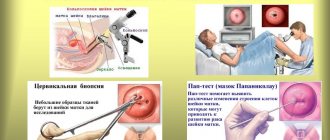No doctor would dare make any serious diagnosis without the results of ultrasound diagnostics. The point of the examination is that sound waves help to display each organ on the screen of the device.
Ultrasound of internal organs is the most popular and informative diagnostic procedure. This study allows the specialist to give an accurate assessment of the condition of the following organs: pancreas, spleen, urinary system, chaledochus, liver. The specialist will see whether the size of the abdominal organs, structure, and wall thickness are normal. This will make it possible to identify existing pathology or confirm its absence, prescribe the necessary treatment or additional research.
This is especially important when the patient is not even aware of existing problems and does not feel any pain or even the slightest discomfort. During an ultrasound examination, a problem that does not yet cause any sensation will be visible. Everyone, without exception, needs to examine internal organs using ultrasound at least once a year.
For the procedure to be successful, certain conditions are necessary. If they are not followed, visualization will be difficult.
When is such an examination prescribed?
Ultrasound diagnostics is indicated if:
- organs are increased in size;
- there is pain in the abdominal area;
- if the patient experiences bitterness in the mouth, discomfort, and pain after eating;
- diabetes;
- suspicion of appendicitis;
- chronic diseases of internal organs;
- suspicion of pathological processes in the liver and spleen (pain and their increase detected during palpation);
- neoplasms in the abdominal cavity and its organs;
- if you suspect stones in the common bile duct;
- aortic aneurysm and other pathologies of internal organs.
Abdominal organs
Ultrasound is used not only for diagnostics, but also to control how certain manipulations are carried out . For example, it is used for liver and kidney biopsies (for needle control). The combination of this procedure with the so-called Doppler study for thrombosis or stenosis of the abdominal organs is relevant. The examination procedure is simple, effective, non-invasive, painless, which allows the use of ultrasound in various fields of medicine.
Preparing for an ultrasound examination
Let us remind you that in the absence of contraindications for the study, the method has high reliability and effectiveness. But like any medical event, it requires some preparation. The basic requirements must be stated by the doctor before the procedure. Most patients are interested in the answer to the question: is it possible to drink and eat before undergoing an ultrasound.
The primary preparation for an ultrasound of the abdominal cavity begins with the fact that 8-10 hours, that is, on an empty stomach, before the ultrasound itself, you cannot drink or eat.
If you need to examine the kidneys or bladder, you should drink about a liter of water. If a patient has had their gallbladder removed, drinking is also not prohibited.
Preparation for an ultrasound of the abdominal organs includes the recommendations of your specialist, who must discuss them in advance. An ultrasound scan of the kidneys must be performed on an empty stomach, without drinking water or eating any food. If the kidney examination is performed in the afternoon, then 7-8 hours before the examination you can eat thin porridge and drink water.
In addition, some time before the kidney test, you need to take charcoal or other drugs that will help eliminate gas formation in the intestines. Before a kidney diagnosis, you should not eat cabbage, fatty smoked foods, black bread, legumes, or dairy products.
In order to properly prepare for the abdominal ultrasound process, you need to take into account that the intestines must be free of gases to accurately determine the position of the internal organs. As a rule, in the vast majority of cases, following a diet is quite sufficient, however, sometimes the patient has to prescribe cleansing enemas the day before. If there are certain problems with the intestines, additional medications in the form of activated carbon may be prescribed. Coal suppresses excess gas formation. It is advisable to take it 1-2 days before the ultrasound.
In order to suppress excess gas formation, you can also take smecta; two sachets per day is enough.
The examination of the gallbladder must be done on an empty stomach. Even with one sip of water, the gallbladder can contract and explore its wall, its contents will be difficult.
A more expensive way to eliminate gas accumulation in the intestines is Espumisan. It is enough to start drinking Espumisan the day before the procedure and on the day of the procedure. The drug in emulsion should be taken two measuring spoons three times a day during or after meals. Espumisan destroys gas bubbles, being an antifoam. Thus, the foam is converted into gas, which, in turn, is absorbed into the walls and leaves the intestines naturally. Espumisan helps you quickly and easily prepare for the ultrasound examination process. The drug must be taken in consultation with a doctor.
Before an ultrasound scan of the abdominal cavity, it is forbidden to drink alcoholic beverages and smoking is not recommended. It is preferable to perform ultrasound on an empty stomach. If you do not follow all the recommendations, the ultrasound readings may be distorted or the diagnosis of organs may be difficult, which will require a repeat examination.
How is ultrasound diagnostics performed?
To perform an abdominal ultrasound, adult patients are placed on their backs on a couch. In order to better visualize individual organs and structures, the doctor may ask you to hold your breath, take a deep breath and exhale.
A contact gel is applied to the skin of the anterior abdominal wall and, by moving the sensor, images of the organs being examined are obtained on the screen.
Modern conditions make it possible to perform not only simple ultrasound, but also in 3D and even 4D format. Of course, the results of such studies are more accurate and of higher quality, but the price range is somewhat more expensive.
How should adults prepare for abdominal diagnostics?
From the physics course we know that air is a poor conducive to the propagation of ultrasound. Therefore, the first stage of preparation for ultrasound diagnostics is to reduce gas formation. For this purpose, a few days before the procedure, a diet is indicated in which it is prohibited to consume foods that enhance the process of gas formation. As an addition to the diet, the doctor sometimes prescribes drugs that improve the digestive process and reduce the formation of gases, such as activated charcoal and festal.
Patients suffering from constipation need to take enterosorbents and enzymes, such as festal, mezim-forte, smecta, activated carbon and other drugs. These substances will help reduce the process of gas formation and stimulate digestion. Thanks to these drugs, metabolism will improve, which will make the ultrasound diagnostic procedure more accurate and informative.
Before an ultrasound of internal organs, it is forbidden to eat for eight to twelve hours. The procedure is usually carried out in the morning. If for some reason the study is carried out, for example, in the afternoon or evening, then the patient can have breakfast, but no later than 6 hours before the ultrasound.
Before an ultrasound examination, you should not smoke; it is advisable to avoid sucking candies and chewing gum. This can lead to contraction of the common bile duct or stomach cramps, and then to an erroneous diagnosis. You cannot do an ultrasound examination after colonoscopy and gastroscopy. It makes no sense to carry out the procedure after open surgery in the abdominal area.
Indications for use
Before the doctor decides to prescribe an abdominal ultrasound to the patient, he discovers a number of pathological symptoms in him, indicating a painful condition of individual organs or the entire system. Therefore, there are the following indications for this type of diagnosis:
- acute and prolonged pain inside the abdomen, which is relieved only with the help of potent analgesics, and then returns again;
- internal bleeding and defecation mixed with capillary blood;
- lack of appetite, which is accompanied by nausea and vomiting of unknown origin;
- discoloration of stool, or feces acquiring a rich dark or green hue;
- acute urinary retention, urine leakage, or kidney dysfunction;
- heartburn, pain localized in the area of the right, left hypochondrium or solar plexus.
In some cases, this symptomatology of a current disease of the internal organs is accompanied by an increase in body temperature ranging from 37 to 39 degrees Celsius. Also, other indications for the use of abdominal ultrasound cannot be excluded, which can be detected by a gastroenterologist.
Activities before the ultrasound procedure
Getting an ultrasound is not at all difficult, since the procedure is quite common and is available in almost every medical institution, both public and private. Ultrasound diagnostics are usually prescribed by a doctor after you contact him for an appointment with any complaints. If you decide to simply undergo the procedure of your own free will, then it is better to contact your family doctor.
You must come to your appointment with an outpatient card. He will write out a referral, and all that’s left to do is to prepare properly and come to see a specialist at the appointed time. This is the standard sequence before a procedure in a public hospital. In private structures, you just need to make an appointment and come with a certain amount of money (in private clinics you will need to pay for this test).
It will not be superfluous to purchase a disposable diaper, which is sold at any pharmacy, napkins or a towel to remove residual gel from the skin, shoe covers can also come in handy.
Proper preparation for abdominal diagnostics is extremely important. Improper preparation can lead to poor-quality images, which means inaccurate examination results.
Results and transcript
It is not enough to simply perform a high-quality diagnosis. It is also necessary to ensure decoding of the data obtained from the survey results. It passes in compliance with the following criteria.
Liquid
The doctor assesses the degree of swelling of the mucous membranes of the internal organs, and whether there is an accumulation of liquid contents in the abdominal space. Those organs that have a hollow structure are also examined. Most of them are physiologically prone to filling with lymph if an acute inflammatory process develops over a long period of time and is not subject to adequate drug treatment.
Seal
In order to determine whether there is a suspicion of possible foreign tumors, the doctor performs a diagnostic test for tissue density. Those areas of the internal organs that have an overly dense cellular structure are subject to more detailed examination. This makes it possible to promptly suspect an oncological process, identify it and prescribe adequate drug therapy with chemicals that prevent a further increase in cancer formation.
Diffuse tissue changes
The development of any pathology of a particular abdominal organ is always closely related to the gradual transformation of its cellular structure. This may be atherosclerosis of tissues, replacement of the epithelium with fiber, its scarring and degeneration. Based on the presence of these pathological symptoms, the doctor determines the severity of the current illness, and also forms a therapeutic course while simultaneously predicting the prospects for recovery.
Each case of development of disease of the abdominal organs is individual. Therefore, ultrasound diagnostics is aimed at identifying a specific disease. Therefore, deciphering the examination indicators is based directly on which organ is in the area affected by the disease, and what symptoms the patient experiences.
Similar articles:
Examination of the abdominal organs and kidneys
Examination using ultrasound waves is safe and painless. The entire process of this examination lasts no more than half an hour. Only some technical issues are considered contraindications, such as dermatological diseases or skin damage in the area where the device sensor should move.
During the ultrasound, the person should lie on their back or side. The stomach should be open. The surface that will come into contact with the sensor must be coated with a gel that improves contact between the device and the skin. For the most thorough examination, the doctor runs a transducer sensor (a special sensitive device) across the abdomen in various directions, as well as at an angle. He does this until he sees the image and receives the information necessary to draw conclusions about the condition of certain organs.
Carrying out ultrasound diagnostics
After the procedure is completed, the gel is removed with a napkin. After this, the specialist describes what he saw on the screen. Usually he reports the results to the patient, but it should be remembered that any examination is carried out for the attending physician and only he can make a diagnosis, prescribe additional diagnostics or treatment.
How is an abdominal ultrasound performed?
During an ultrasound of the abdominal cavity, the following are sequentially examined:
- 1-liver, 2-kidney The liver is the largest organ of the abdominal cavity. Therefore, the study always begins with an ultrasound of the liver. Ultrasound of the abdominal cavity often reveals fatty hepatosis. Fatty hepatosis develops in people who are overweight and have poor nutrition and/or low physical activity. The disease is fraught with the fact that the liver carries out important processes in the body, for example, the synthesis of lipoproteins - particles that transport blood fats and can cause atherosclerotic plaques. In addition, sex hormones are inactivated in the liver. Therefore, a violation of the liver structure detected by ultrasound of the abdominal cavity serves as an early predictor of such serious disorders as vascular atherosclerosis, coronary heart disease, impaired potency and the ability to fertilize. Since almost all the blood flowing from the abdominal organs collects in the liver, if malignant tumors are suspected, the liver is the first place where metastases from tumors are visible during an ultrasound of the abdominal cavity.
- Gallbladder and bile ducts. During abdominal ultrasound, special attention is paid to the condition of the biliary system, since pain in the right upper abdomen is a very common symptom. The gallbladder is examined for cholecystitis, the presence of stones in the cavity, gallbladder polyps, and to diagnose the patency of the biliary tract. Ultrasound of the gallbladder is always performed in case of jaundice.
- The pancreas is not always well visualized during abdominal ultrasound, since it can sometimes be obscured by the stomach and intestinal loops. For ultrasound of the pancreas, proper preparation for the study is especially necessary. The pancreas performs an important function in digestion and in the regulation of carbohydrate metabolism. Ultrasound of the abdominal cavity makes it possible to detect disturbances in the structure of the pancreas in case of girdle pain and pain in the left side of the abdomen.
- During an ultrasound of the abdominal cavity, the spleen is examined with the patient lying on the right side with the arm clasped behind the head. During an ultrasound of the spleen, it can be difficult to visualize it all at once, since it is located in such a way that the access of ultrasound beams to it is obscured by the ribs and air from the lungs. Pay attention to the size and structure of the spleen. Sometimes a change in spleen size alone can indicate serious pathology in the early stages.
- Ultrasound of the stomach during ultrasound of the abdominal cavity allows you to examine the organ dynamically in many projections, partly replacing the need to undergo a not very pleasant endoscopy procedure (swallowing a probe), which is also fraught with the possibility of infection. Examination of the stomach is not included in the routine ultrasound of the abdominal cavity, but in our clinic we perform it whenever possible. Such a study, for example, makes it possible to identify latent peptic ulcer disease, which, if unrecognized, can cause serious complications up to the opening of bleeding
- Ultrasound of the intestines is also not always performed with ultrasound of the abdominal cavity. In fact, a few minutes of examination are enough to notice abnormalities, the so-called hollow organ syndrome. If this syndrome is detected, the patient may be offered more specialized tests to make a diagnosis. As a screening tool, intestinal ultrasound is invaluable and is technically quite easy to perform.
- Kidney ultrasound is also most often performed as part of an abdominal ultrasound. Formally, the kidneys lie retroperitoneally, but the same methodological techniques and sensors used make it possible to quickly diagnose kidney damage, reducing the time required for a special study. Most often, urolithiasis, signs of pyelonephritis, and nephroptosis are detected, but sometimes asymptomatic tumors are also detected.
- Ultrasound of the ureters is performed with good preparation. If there is no excess accumulation of gases in the intestines, during an ultrasound of the abdominal cavity, the ureters can be traced from the renal pelvis to the place where they enter the pelvis. In some cases, motor activity of the ureters can even be observed. Such a study helps to find out the cause when obstructive nephropathy occurs.
Dopplerography of liver vessels
- When examining the abdominal cavity, duplex scanning of the vessels is also performed: the abdominal aorta, the celiac trunk and its branches, the superior mesenteric artery, the renal arteries, the external and internal iliac arteries, the inferior vena cava, the portal vein, the splenic and superior mesenteric vein. Such vascular studies help to identify the causes of abdominal pain, which are caused by impaired blood supply to the abdominal organs and cannot be detected using conventional ultrasound diagnostics. The study of blood flow in the renal arteries stands out. Narrowing of the renal arteries can lead to hypertension and impaired renal function.
- Ultrasound of the bladder is performed as an integral part of ultrasound of the abdominal cavity. In this case, the most important task is to diagnose ureteral patency, which is judged by ureteral emissions recorded in the bladder using color Doppler.
- Ultrasound of the prostate gland during an examination of the abdominal cavity allows you to quickly obtain superficial information about the shape and size of the prostate gland and seminal vesicles, and about changes in the structure of the prostate gland. It is during transabdominal ultrasound of the prostate gland that 3D/4D reconstruction of changes in the contours of the prostate gland is possible.
- Ultrasound of the uterus and appendages during an ultrasound of the abdominal cavity also serves as a screening method that makes it possible to diagnose, for example, polyps of the uterine cavity, pregnancy, ovarian cysts and uterine leiomyomas.
- Lymph nodes in the retroperitoneal space often become visible during an abdominal ultrasound. Enlarged lymph nodes are associated either with inflammatory diseases or with metastases of cancerous tumors. Therefore, the enlargement of lymph nodes detected during the study is given great importance.
- Possibilities of abdominal ultrasound in health screening studies
- Using the examples above, you can see that ultrasound of the abdominal cavity, when performed correctly, is a very valuable diagnostic test. If the slightest deviation from the norm is detected in the organs being examined, our clinic has the opportunity to promptly prescribe additional studies and tests that will help you get the maximum benefit from an abdominal ultrasound. During the examination and after it, the doctors of our clinic advise the patient in detail on how to interpret the phenomena detected during ultrasound. All detected deviations are documented using photographs and, if desired, recorded on a removable storage medium (disk, flash memory).
How to eat before an ultrasound examination
Before an ultrasound, you should not eat sweets, dairy products, confectionery, drink milk, avoid soda water and other carbonated drinks, sauerkraut, alcohol, juices, too fatty meat, strong coffee and black bread.
For people who are overweight or prone to excessive gas formation, it is recommended to take carminative medications a few days before the ultrasound examination. Meals should be frequent and portions small (you should eat up to five times a day). You can drink as much as you want.







